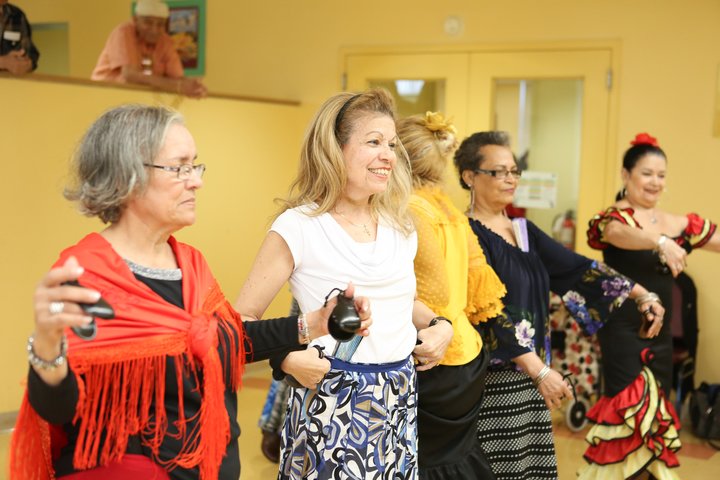
“I like that it is hard. I get nervous, but I love it.”
– SU-CASA participant
Creative aging refers to programs promoting arts participation by older adults. Creative aging as exemplified by SU-CASA is based on five principles:
- The instructor is a working artist and trained teacher, knowledgeable about the concepts of creative aging.
- The instruction is sequential, each lesson building on the one before.
- The class builds toward a culminating event.
- The teaching artist encourages creativity and experimentation.
- The class promotes social engagement.
The field of creative aging grew out of the Creativity and Aging Study by Gene Cohen and colleagues (2006), funded by the National Endowment for the Arts. The study was based on the theory that arts participation stimulates social engagement and contributes to older adults’ sense of control or mastery, which in turn promotes well-being. The arts can also showcase older adults in a new light: One of the programs in that study, Elders Share the Arts, was founded by Susan Perlstein in 1979 as an effort to combat ageist stereotypes and show older people as “keepers of culture” (Jeffri & Hanna, 2016).
The focus on positive aging in healthy adults differentiates creative aging from the practice of art therapy or hospital-based art programs, which focus on healing.
Creative aging is starting to thrive in New York City. The research outlined in this report takes the pulse of this effort and leads to recommendations for how to build on its success.